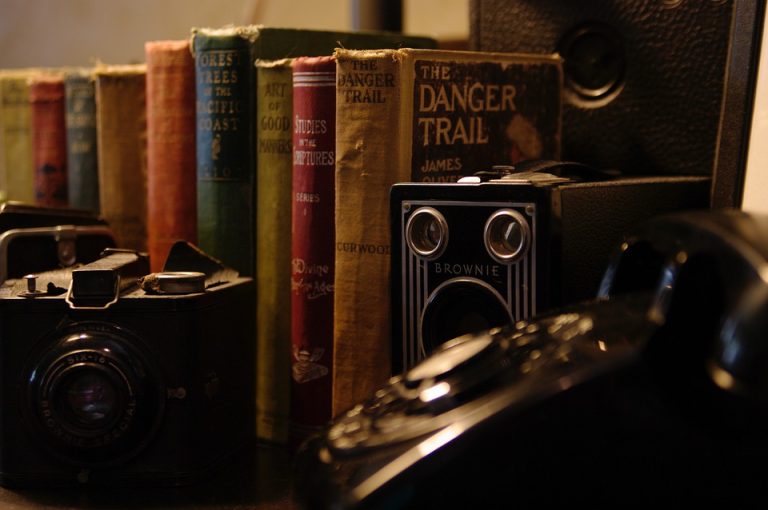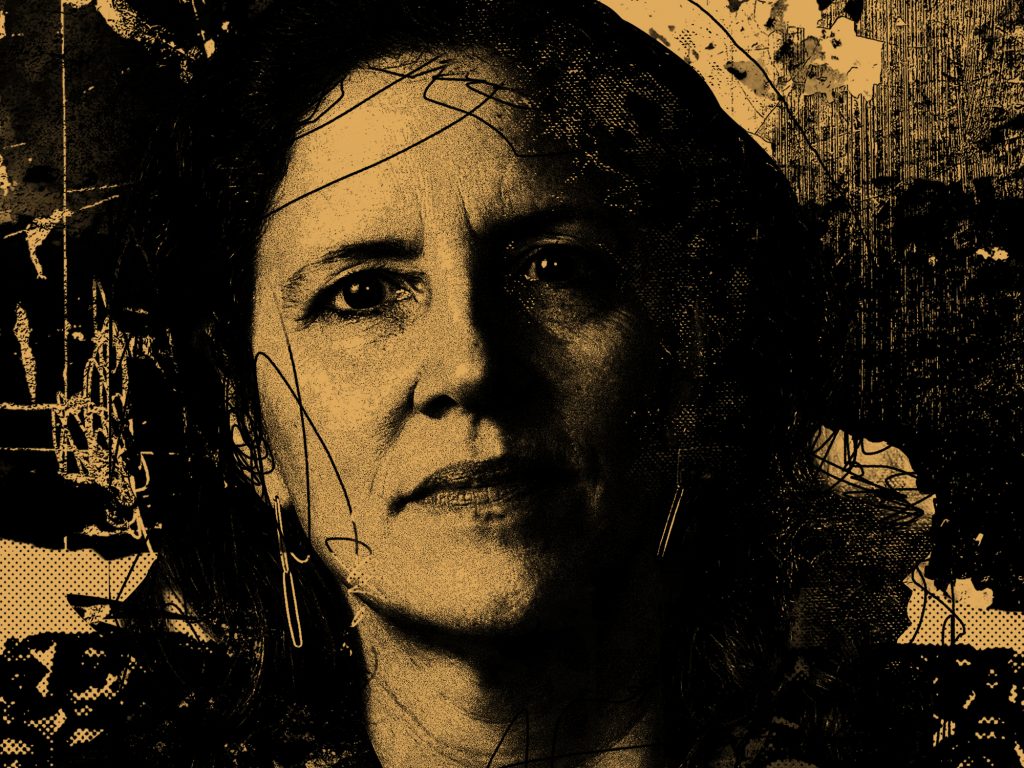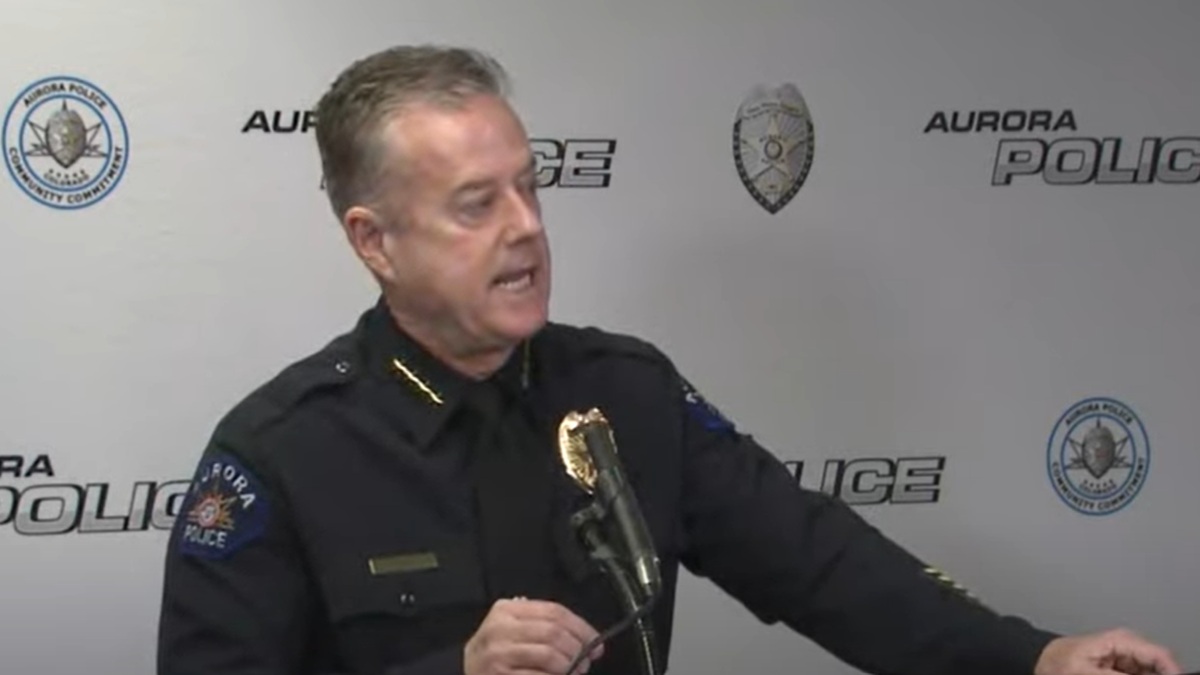I don’t remember exactly when I first heard it but it was in high school sometime in the early nineties. I was listening to the radio after school but before my parents returned home from work. Rock music was the sound of my teenage rebellion. It was forbidden in our house so I had one ear on the radio and the other on the garage door. Suddenly I heard a familiar twang in an unfamiliar place. It was the distinct sound of a sitar, but in a rock song: The Beatles’ “Norwegian Wood.” How strange to hear the sitar alongside English rockers crooning about a long-lost love? As a first-generation Indian American who spent my weekday afternoons illicitly jamming to pop and rock while doing homework and my weekends at Indian classical music concerts, I found myself constantly humming the tune.
But even that didn’t prepare me for when I turned the radio dial and blaring back at me came, “Ha-re Krish-na, Krish-na Krish-na, Ha-re Ra-ma, Ra-ma Ra-ma.” I couldn’t believe chants to Hindu deities Krishna and Rama, which I was accustomed to hearing in the sanctity of a Hindu temple or uttered by my grandmother in prayer, were being sung in a rock song. That was my introduction to the iconic hit song “My Sweet Lord.”
In truth, I couldn’t yet admit to liking the song because it felt a bit like when white girl rockers like Gwen Stefani wear a bindi as a costume. Doing so, I felt, might make me a bad Indian, betraying my culture by falling prey to the wiles of a culturally appropriative yet masterful performer. Yet, this song oddly captured my essence—a little bit Hindustani, a little bit rock ‘n roll. And the lyrics about the singer’s search to find and be found by his “Sweet Lord” spoke to my own quest to find my identity and be seen in my totality as an Indian-American—a person formed by these two bold, and often opposing, cultures. It would still be a few years until I learned that one musician was behind the Indian influence in both of these songs: rocker George Harrison.
This song oddly captured my essence—a little bit Hindustani, a little bit rock ‘n roll.
These perplexing feelings would come rushing back to me during my initial interview with Grammy-nominated, Hindustani singer Lakshmi Shankar—the subject of my first book—when she mentioned that she went on a fifty-city stadium rock ‘n roll tour and sang alongside George Harrison. I was stunned. I had known Lakshmiji, as I affectionately referred to her, my whole life, had been to dozens of her concerts from the age of five onwards, and counted her amongst my most favorite singers. Her repertoire of Hindustani ghazals, thumris, and khyals were imprinted in my mind, part of the indelible soundtrack to my childhood.
Lakshmiji had pulled out a cassette tape, during our interview, and had played me, “I Am Missing You,” a sweet ballad where she implores Lord Krishna to show himself, confessing she is missing him terribly. In all the years of listening to her music, I had never heard Lakshmiji sing in English. Yet, here she was not only singing in English but accompanied by a rock band—keyboard, saxophone, bass guitar, and drums! Lakshmiji flipped the tape over and a second version of the song played, this time her voice was accompanied by Indian instrumentation—santoor, bansuri flute, and tabla. She called “I Am Missing You” a “Hindustani pop song”—it was unlike anything I’d ever heard.
Ravi Shankar, renowned sitar player and her brother-in-law, composed the song and none other than George Harrison produced it. “This is amazing, you’re a rockstar, Lakshmiji!” She laughed as I sat in disbelief wondering what else I didn’t know about this traditional Hindustani singer, close in age to my grandmother, always clad in a sari and a bindi. In that moment, I had a dawning realization that my assessment of George and his relationship to Indian music and culture might be, at best, incomplete, and at worst, unfair.
In truth, before embarking on writing Lakshmiji’s biography close to ten years ago, I had already made up my mind about George. I believed he and all the other white rockers of the late 1960s, casually strumming the sitar or playing guitar riffs inspired by Indian ragas on their rock songs, were cultural appropriators. They were indiscriminately poaching and misappropriating Indian music with little regard for its significance or context to Indian culture. For them, it served merely as a trendy “exotic motif” to spice up their music and image.
Before embarking on writing Lakshmiji’s biography close to ten years ago, I had already made up my mind about George.
I wasn’t entirely wrong. For many rock bands of that era featuring Indian musical and cultural motifs, playing pentatonic scales while donning kurtas and malas cemented their appeal with hippie and counterculture audiences.
But as I delved deeper into my research into the journey of Indian music to the west and George’s role in this cultural transmission I began to realize that perhaps he had transformed himself from a cultural appropriator to an ambassador for Indian music as he evolved his own understanding and appreciation. My feelings and beliefs about George as an artist and as a person began to shift and evolve, as perhaps his own feelings and beliefs about Indian music had. Admittedly, it had certainly been easier for me when I could consider George solely as a cultural appropriator and cancel him in my mind. However, this experience had now complicated my thinking on cultural appropriation, making it more complex and nuanced, more gray rather than starkly black and white.
I had been working in racial justice when I began to be haunted by the need to write the life story of Lakshmi Shankar, a Grammy-nominated singer who was the most prominent Indian female musician in the movement that brought Indian music to the west in the 1960s, a movement sparked by her own brother-in-law and frequent collaborator, sitar maestro Ravi Shankar. Yet, it was white rockers like George Harrison and the Beatles, the Rolling Stones, and The Byrds who received the most attention and accolades for making Indian music hip and cool, even when it sometimes came at the expense of stripping it of its cultural context. One of the more insidious ways that racial injustice works is by erasing the stories and contributions of those already marginalized by society. Through my biography, I had hoped to remedy what I saw as the racist and sexist historical perspective of white chroniclers who had left her out of the history books.
And as far as I had been concerned, George Harrison and his appropriation of the sitar and Indian music was part of this biased history.
George, I learned, first came across the sitar on the set of The Beatles’ movie, Help! in 1965. Like many movie depictions of Asian culture at the time, Help! featured a problematic, Orientalist plot about the Beatles trying to escape the clutches of an Indian swami and his cult. George picked up a set musician’s sitar and began strumming it. Soon after, he would ignite a “sitar craze” by plucking out the indelible melody of “Norwegian Wood” (1965)—one of the Beatles’ most iconic songs—on the sitar.
At this stage, George was like most white rockers, who in their search for the newest sounds, was drawn to the exotic, mystical scales of Indian ragas and the tinny, harp-like sound of the sitar—a faraway cousin to the guitar. There’s no escaping the irony of cutting-edge rockers turning to a foreign musical tradition dating back hundreds of years to find their latest sonic trend. But in doing so, most of them didn’t bother learning much about the culture of its origin or the theory or techniques of Hindustani music, satisfied to just appropriate from the tradition to score their next hit song.
At this stage, George was like most white rockers, who in their search for the newest sounds, was drawn to the exotic.
Then again, this wasn’t surprising given that both The Beatles and the Rolling Stones had appropriated the sounds of Black musical traditions, including the blues, soul, and gospel, in creating their own “trademark” sound. And history rewarded white artists including The Beatles and Elvis by crediting them as the “inventors” of rock ‘n roll rather than Black soul rockers, James Brown, Little Richard, or Sister Rosetta Tharpe.
In my mind, cultural appropriation by white artists and erasure of indigenous artists by white cultural gatekeepers were twin blades working together to diminish indigenous cultures and artists and their role in the world. Hence, irrespective of his artistic intent, I viewed George as an appropriating white rocker who fetishized and capitalized on Indian musical motifs.
George went on to compose other songs as part of the Beatles repertoire, which reflected his growing interest in Indian music, including “Love You To” (1966) and “Within You Without You” (1967). The Indian influence on these songs is boldly evident from the melodies, to the instrumentation, to the metaphysical lyrics inspired by Hindu philosophy. In fact, Indian musicians from the Asian Music Circle, including a sitar player, tabla player, and others play on these tracks. Also boldly evident is the erasure of these Indian artists given that none of them are credited in the album liner notes.
What is more emblematic of bald-faced cultural appropriation than the biggest rock band in the world using indigenous musicians to create their distinct sound while erasing them from musical history?
I needed to know, was he an appropriator of Indian culture and music or was his relationship something more complicated?
But as I delved further into my research for Lakshmiji’s biography, I also found myself falling more deeply into the wormhole of George’s music, becoming obsessed with trying to discern George’s true motivations. I needed to know, was he an appropriator of Indian culture and music or was his relationship something more complicated? Something harder to label?
Even as I labored on my own biography seeking to lift up the story of an overlooked Indian female artist who helped bring Indian music to the west, I couldn’t completely deny that the Indian-inspired songs composed by George and recorded by the Beatles had helped bring Indian music to legions of new fans. Appropriative or not, their interest in Indian music and culture, helped set off a broader cultural curiosity and hunger which would have a lasting impact in the west.
But perhaps more is revealed by the impact Indian music had on George. It became clear to me that experimentation with Indian music helped George find his voice and served as inspiration for him as a composer and lyricist in a band where Paul McCartney and John Lennon were understood to be the de facto songwriters and singers. Just as importantly, his exploration of Hindu spirituality helped him make sense of the world and his purpose amidst his helter-skelter ascent to fame and fortune.
In his memoir, I Me Mine, George talks about the influence on his songwriting of Indian ragas, which are more like musical moods than the key signatures of western classical music: “… it really did help me as far as writing strange melodies and also rhythmically it was the best assistance I could have had.” And he went on to elaborate, saying, “It seems to me that for a certain type of writer, it is not so much what he feels or stories about what he is going through, but it is more like a craft. This Indian music we are listening to now is directly conveying the feelings of the player. So to try to write a song is, to me, more a case of being the vehicle to get over the feeling, of that moment, of that time.”
In truth, reading George’s account of the impact of Indian spirituality and music on his life and music, I begrudgingly realized how much I related to his journey towards finding deeper purpose and meaning and to finding his own voice as a singer and songwriter. I only became a writer close to the age of forty, sparked in large part by my mission to tell Lakshmiji’s story. But to do this meant I had to get over the fact that despite committing myself to writing full time and to telling Lakshmiji’s story, I still didn’t see myself as a writer, and neither did many around me. I didn’t have the educational credentials of a writer or the experience, just a deep-seated desire to express my perspective on the world through my words.
My hypersensitivity around cultural appropriation was rooted in the fact that I came to writing after having worked in racial justice only to find that the literary and publishing realms were unbelievably undiverse and inequitable. Writers of color, including myself, were struggling to publish our own authentic stories because they were often viewed by gatekeepers as too niche, while white writers’ stories were framed as universal and culturally relevant. When Black and brown writers wrote of their experiences being marginalized, it risked being viewed as grievances, while when white writers wrote about marginalized communities outside of their identity and experiences, it was often hailed as heroic.
When white writers wrote about marginalized communities outside of their identity and experiences, it was often hailed as heroic.
But this was not my first encounter with cultural appropriation. I had found my way to yoga in my early twenties as it was growing in popularity across the country and globe during the late 1990s. I had come to treasure it as a practice that strengthened my mind and body, while connecting me to my culture and Hindu spirituality. At first, I was glad to see this aspect of my native culture find a place in American society but I soon became uncomfortable as I watched yoga be increasingly severed from its cultural and spiritual roots and appropriated and commodified by white, upper-class influencer “yogis.”
My first yoga teacher was, in fact, white and approached the practice and teaching of yoga with great respect. But she soon became the exception. When a white yoga teacher, who had anointed herself with the name Parvati—the name of a Hindu goddess—fetishized my “brown skin” and “exotic name,” I abandoned yoga, only finding my way back to it twenty-five years later, amidst the pandemic.
George’s interest in Indian music didn’t dissipate after “Norwegian Wood.” Instead, he craved a deeper understanding of Indian music so, he sought out Ravi Shankar, whose mastery over the sitar was earning him international attention. Ravi and George first met in London in 1966 and George asked Raviji if he would teach him the fundamentals of sitar and Hindustani music.
George made trips to India—with The Beatles and on his own—during the height of his fame, in order to learn more about Hindu spirituality and Indian music. Explaining the importance of his relationship with Raviji as his conduit to Indian music, George said in Ravi’s memoir Ragamala, “(Ravi) was the first person who impressed me in a way that was beyond just being a famous celebrity. Ravi was my link into the Vedic world. Ravi plugged me into the whole of reality … The moment we started, the feelings I got were of his patience, compassion and humility.” But beyond this, George also valued Raviji as a close friend as captured in Martin Scorsese’s documentary, George Harrison: Living in a Material World: “Just to be able to be his friend is an honor and a joy.”
I couldn’t deny the power of George and Raviji’s enduring friendship and collaboration.
I couldn’t deny the power of George and Raviji’s enduring friendship and collaboration. Theirs seemed, to me, like an unlikely musical brotherhood between a rock star and an Indian classical musician, transcending cultural identity, a friendship based on mutual admiration and affection, rather than exploitation.
With the dissolution of The Beatles in 1970—a breakup that shook the whole world of rock ‘n roll—George was finally free to pursue his own musical interests, and he continued to follow his passion for Indian music and spirituality. His first solo album, All Things Must Pass, whose title itself refers to the temporality of life, a conceptual bedrock of Hindu spirituality, featured “My Sweet Lord,” a song unlike anything heard before or since, fusing the musical chanting of the Hindu Krishna Maha Mantra, “Hare Krishna, Hare Rama,” with the sounds of Christian gospel through a refrain of “Hallelujah,” with rock instrumentation. The spiritually-focused song featuring a choir of Hare Krishna devotees, (at the time, Harrison was involved with the Hare Krishna spiritual movement), became an unlikely yet resounding hit climbing to #1 on the U.S. Billboard Hot 100 and staying in the Top 50 for four consecutive weeks before being certified gold by RIAA (Recording Industry Association of America).
Even today, more than fifty years later, I’m in awe that George could create a rock song centered on spirituality rather than romance or desire, the stuff of most rock songs, one that included both Christian gospel and Hindu chants, and have it become the most popular song in the country.
George knew he was taking a big chance in making “My Sweet Lord” but felt it reflected where he was spiritually. “I wanted to show that ‘Halleluja’ and ‘Hare Krishna’ are quite the same thing. I did the voices singing ‘Halleluja’ first and then the change to ‘Hare Krishna’ so that people would be chanting the Maha Mantra – before they knew what was going on! I had been chanting ‘Hare Krishna’ for a long time and this song was a simple idea of how to do a Western pop equivalent to a ‘mantra,’ which repeats over and over again, holy names.”
My understanding of George’s musical legacy, however, would once again be complicated by appropriation when I learned that George ended up being sued for plagiarizing “He’s So Fine,” a 1963 hit song by The Chiffons, a Black, all female group. The judge found the musical themes of George’s “My Sweet Lord,” and The Chiffons’ “He’s So Fine” uncannily alike and George was eventually found guilty of “subconscious plagiarism.” While the judge noted that he didn’t think George had set out consciously to plagiarize, it still constituted plagiarism.
George had to pay more than $1.5 million in damages and the case haunted him as a songwriter and musician.
George had to pay more than $1.5 million in damages and the case haunted him as a songwriter and musician. “I wasn’t consciously aware of the similarity between ‘He’s So fine” and “My Sweet Lord’ when I wrote the song as it was more improvised and not so fixed, although when my version of the song came out and started to get a lot of airplay people started talking about it and it was then I thought, “Why didn’t I realise?’ It would have been very easy to change a note here or there, and not affect the feeling of the record.”
When I thought more about the case and its outcome, I wondered if perhaps white artists, like George, can grow so used to appropriating the sounds of marginalized cultures, that perhaps they start to subconsciously believe that those sounds are their own or, at the very least, they’re entitled to them.
Raviji approached George deeply distressed about the death and suffering from the war engulfing Bangladesh, homeland of his musical guru, Ustad Allaudin Khan. As a Bengali, who shared a language and other cultural aspects with Bangladeshis, Raviji wanted to put on a concert to raise funds to aid the people of Bangladesh and hoped George might participate. Instead, George responded by taking the reins, inviting an incredible line up of rocker friends including Bob Dylan, Eric Clapton, Ringo Starr, Billy Preston, and Leon Russell.
George composed and performed a song “Desh,” about how everyone can and must find a way to help the people of Bangladesh while Raviji performed his own original composition, “Bangla Dhun” alongside master sarod player, Ali Akbar Khan, who was Ustad Allaudin Khan’s son and Ravi’s own brother-in-law, accompanied by his favorite tabla player Alla Rakha. The August 1, 1971 show sold out so quickly that organizers added another show on the same day, which also sold out.
The recording of the landmark Concert for Bangladesh featuring a chock full of rock ‘n roll heavy hitters and performances by George and Raviji ended up winning a Grammy for Best Album of the Year. But just as importantly the Concert for Bangladesh, itself, raised millions of dollars in aid for Bangladesh, becoming the model for future rock benefit concerts, including 1984’s Live Aid and the ongoing Global Citizen concerts.
Burned in my mind are the images of emaciated Ethiopian children playing on loop over a soundtrack of “Drive” by The Cars.
Detractors may unilaterally frame efforts like the Concert for Bangladesh and Live Aid as the work of “white savior” rockers. It’s true that organizers, who were overwhelmingly white, often promoted these events using “poverty porn,” problematic images and rhetoric, which tended towards reductive portrayals of countries like Bangladesh and Ethiopia in paternalistic and monolithic ways, emphasizing poverty and destitution rather than acknowledging their cultural richness or the complexity of the crises they faced. This is evident in the stark cover image of The Concert for Bangladesh vinyl box set, which features a beleaguered young Bangladeshi child beside an empty plate.
My father was born and raised in Bangladesh, a country so often overshadowed by its neighbor, India, so George’s monumental, even if imperfect gesture, holds particular significance for me. Although I wasn’t born in time to witness the impact of the Concert for Bangladesh, I remember watching the live telecast of Live Aid while staying at my parents’ closest Bengali friends’ home in London, en route to India. Burned in my mind are the images of emaciated Ethiopian children playing on loop over a soundtrack of “Drive” by The Cars. They reminded me of the malnourished children I witnessed begging on the side of the roads during our trips to India. My friend and I felt compelled to scour her parents’ house for spare change to donate.
While it’s undeniable that the framing of these events smacks of cultural arrogance and insensitivity, I wonder, is it not a different type of cultural arrogance to summarily dismiss the life changing impact these musical events had in raising awareness and lifesaving funds for often ignored regions of the world? Ultimately, through the Concert for Bangladesh, George and Ravi, demonstrated how friendship and music can be forces that change our world for the better and provided a model for future humanitarian endeavors by artists.
George created his own record label, Dark Horse, and was busy working on pushing out his second solo album of the same name. He had launched his label with the vision of putting out records by eclectic artists he loved, such as Black gospel singer Billy Preston and an ensemble album by Raviji and fellow Indian classical musicians, including Lakshimiji.
But George went further. He approached Raviji with the radical idea of doing a combined, cross-cultural tour for his new Dark Horse album and Raviji’s Music Festival from India ensemble album.
As I immersed myself in researching the 50-city Dark Horse tour, reading chronicles of it in Rolling Stone and elsewhere, I found myself desperately wishing I could have been a fly on the wall for this breakthrough musical event that brought together both of my cultures. It’s especially uncanny and poignant that this tour was launched November 1974, the month and year I was born. Whenever I wonder what was happening in the world as I arrived into it, this is the event I come back to, time and again.
Raviji, Lakshmiji, and several of the best Indian musicians set out on a cross-country tour alongside George and his stellar rock ensemble, including the likes of singer Billy Preston. I was mesmerized by the behind-the scenes photos Lakshmiji shared with me, including a photo of the chartered plane George had custom emblazoned with an “Om” symbol. Snapshots of Indian musicians in their saris and salwar kameez rehearsing and hanging out with rock musicians clad in mostly bell-bottom jeans and t-shirts. I paused when I came to a tender photo of George and Lakshmi hugging each other.
I paused when I came to a tender photo of George and Lakshmi hugging each other.
She talked to me about how George had been a kind man with an “Indian soul” who took such good care of all of them and how she had loved feeding him her home cooked dishes on his visits to India. Lakshmiji was both one of the most talented musicians I admired as well as one of the warmest people I knew and I felt compelled to reconsider George through the lens of her deep affection.
Some critics weren’t kind in their assessments of the tour, the Dark Horse album, and George’s voice, which had been strained from working furiously to complete his own album and produce Ravi’s ensemble album. They saw the Indian ensemble as an exotic and unnecessary distraction for American rock fans who were itching to see George perform, especially since he was the first Beatle to tour the U.S. since their break up in 1970.
When interviewed mid-tour by Rolling Stone, George offered his sanguine take on some of the criticism of the tour: “At every concert,’ he said, ‘something good has gotten across to the audience. There’s been bad moments in each show, but I mean it doesn’t matter, because the spirit of everybody dancing and digging it. And if you get 50 drunkards who are shouting, bad-mouthing Ravi or whatever, … you get 17,000 people who go out of there relatively pleased, some of them ecstatic and some of them who happen to get much more from it than ever thought …”
Why had George undertaken this grand endeavor of a cross-cultural tour, the likes of which had never been attempted before, putting his own musical reputation and resources at stake, if not to promote Indian music and musicians and to demonstrate the power of musical collaboration?
George, a chief villain of my story, had unexpectedly become one of its unlikely heroes.
I had envisioned the chapter in my biography of Lakshmiji about this breakthrough era when Indian music made its way to the west as a chance to call out white rockers like George who had appropriated Indian music for their own artistic ends. But then, George, a chief villain of my story, had unexpectedly become one of its unlikely heroes. When I close my eyes and think of that legendary tour, I have a vision of Lakshmiji clad in a sari, her serenely smiling face anointed with a large, round bindi, standing next to George in front of a mass of screaming fans, their voices soaring in unison.
Ever since Lakshmiji played me that cassette tape of “I Am Missing You” and I learned of the remarkable cross-cultural Dark Horse tour, I’ve grown more and more confounded and fascinated by George. It’s true, George seemed to have begun as a cultural appropriator but I believe he transformed into one of the most passionate and dedicated cultural ambassadors for South Asian music and culture through his words, his deeds, and of course, his music.
George was someone who brought people and cultures together. This was evidenced by the range of performers at the historic Concert for Bangladesh in 1974 and decades later at the 2002 “Concert for George,” which marked the one-year anniversary of his death, where his son Dhani and Ravi’s daughter Anoushka performed. And it was obvious at George’s posthumous Rock and Roll Hall of Fame induction ceremony concert in 2004, where Prince, the great Purple One, himself, paid tribute to George with the most epic guitar solo to George’s Beatles ballad, “While My Guitar Gently Weeps.”
These days, I often have George’s music on rotation, whether on digital or vinyl, captivating me with his melodies and inspiring me with his lyrics about the temporality of life, the essentialness of love, and the belief that periods of difficulty and darkness often precede those filled with joy and light. His songs have never been more relevant and comforting than during the recent pandemic. In 2020, during the harrowing days of the pandemic’s peak in New York City, one hospital began a tradition of playing George’s uplifting “Here Comes the Sun,” as they wheeled discharged COVID-19 patients through their lobby and into the waiting arms of family and friends, after long and frightening recovery periods. So, it’s fitting that “Here Comes the Sun” made history recently by becoming the first Beatles song to hit one billion streams on Spotify, beating out iconic songs from McCartney and Lennon.
Sometimes as I listen to his music, I allow myself to imagine if I had come of age as a teenage girl when The Beatles burst on to the stage. I can see myself swooning over George, “the quiet Beatle,” especially during his hippie phase, with his gorgeous long, brown, locks and stark cheekbones making him look part rock god, part Indian ascetic.
As I listen to his music, I allow myself to imagine if I had come of age as a teenage girl when The Beatles burst on to the stage.
I admit, George has frayed my intellectual resistance; he has changed my mind through his music and his life. Yet, the irony is not lost on me that it was my deep dive into researching the life of an overlooked Indian female musician that opened me up to understanding how a celebrated white male rocker’s relationship to my own culture transformed and blossomed in ways that brought the world a bit closer together.
I’m less interested in erasing or excusing George’s acts of appropriation, but instead more interested now in seeing them in the context of his own evolution as a person and as an artist of his times. George’s life and work has offered me a new, more complicating lens, for examining and revising my own understanding of cultural appropriation while reaffirming my belief in transformation, that one can start out a cultural appropriator, and then if open to listening and honoring the voices of a culture, one can evolve into a cultural appreciator. George sang of how “all things must pass.” Just as they can emerge into existence, they can evolve. And, so can we.

























































